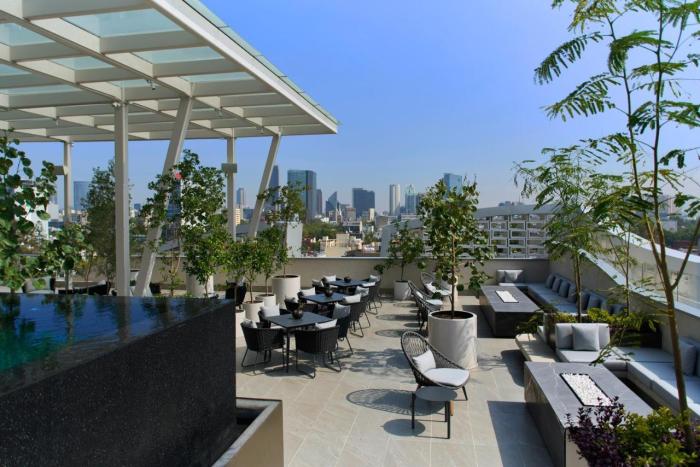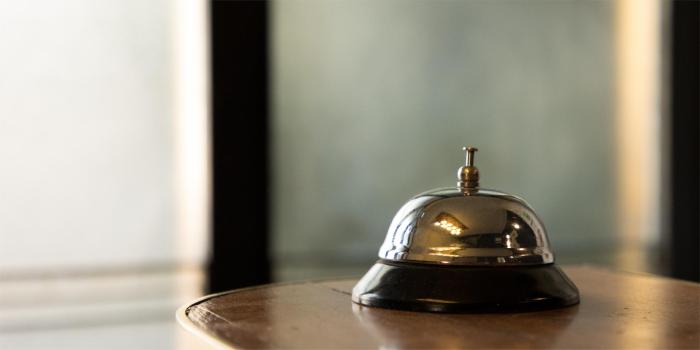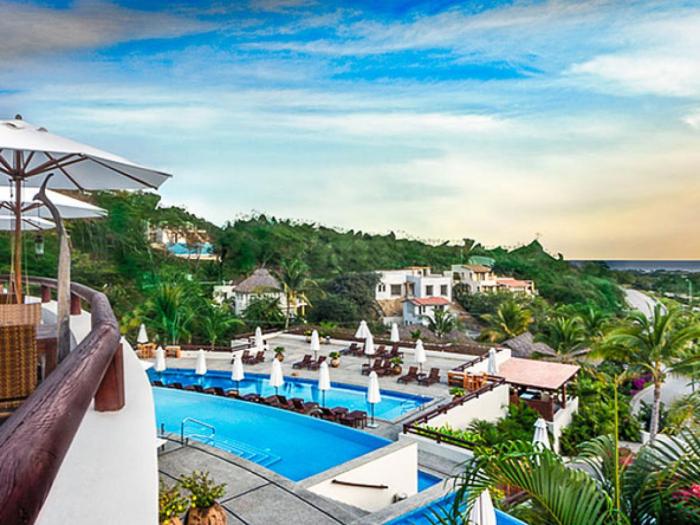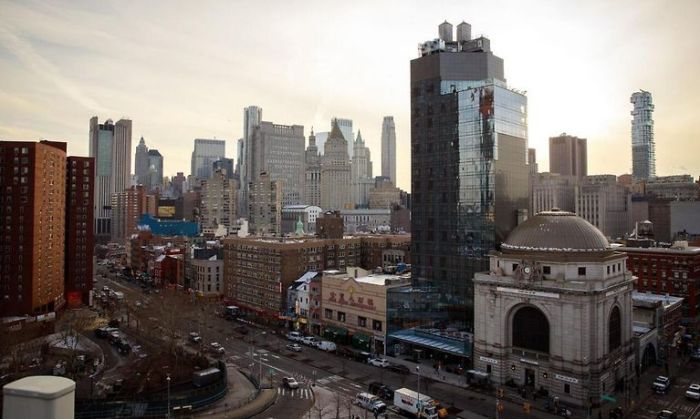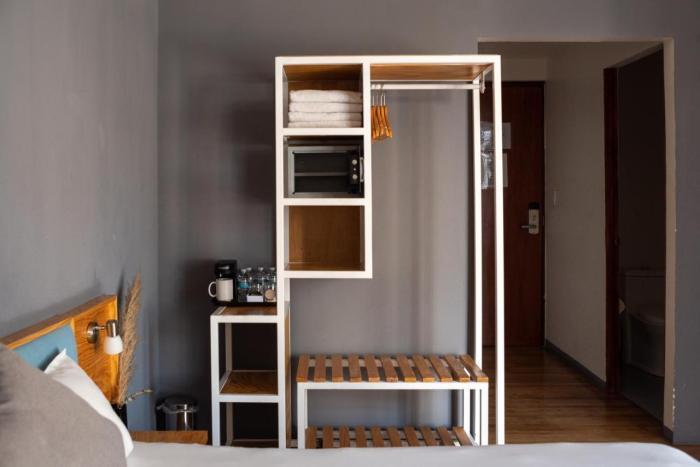Metro Hostel Boutique Urban Oasis
Metro Hostel Boutique – Metro Hostel Boutique offers a unique blend of budget-friendly travel and urban living. Nestled in the heart of the city, these hostels provide a vibrant experience, combining the social atmosphere of a hostel with the comfort and style of a boutique hotel. Imagine a modern space, ideally located near public transport, filled with stylish design and thoughtful amenities, perfect for solo travellers, couples, and groups seeking an authentic urban adventure.
This guide delves into the core elements of a successful Metro Hostel Boutique, exploring its defining characteristics, amenities, location, design, marketing strategies, pricing models, and real-world examples. We’ll dissect the key factors that differentiate this type of accommodation from traditional hostels and hotels, revealing the secrets to attracting and retaining guests in a competitive market.
Defining Metro Hostel Boutique
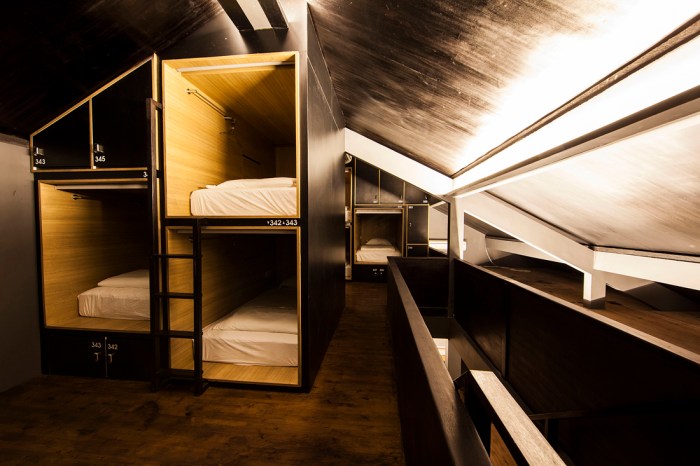
Source: attitude-mag.com
A metro hostel boutique is a unique type of hostel, blending the social atmosphere and affordability of a standard hostel with the comfort and design of a boutique hotel. Located in or near a city’s central areas, they offer a more refined experience than a budget hostel while still being accessible for travelers on a budget.
These hostels are designed to attract travelers who want a centrally located, stylish, and social stay without sacrificing quality or comfort. They typically offer more private and comfortable dorm rooms, and often include shared amenities like kitchens and common areas that are well-maintained and stylishly designed.
Key Characteristics of a Metro Hostel Boutique
Metro hostel boutiques stand apart from other hostels due to their specific focus on location, design, and amenities. They aim to provide a unique experience that blends the benefits of a hostel with the elegance of a boutique hotel. This often includes a modern design aesthetic, premium bedding, and high-quality communal areas. In contrast to budget hostels, which typically prioritize affordability, metro hostel boutiques prioritize comfort and style. The location is usually a key differentiator, often positioned near transportation hubs and tourist attractions in a city center.
Target Audience
The target audience for metro hostel boutiques is diverse, encompassing budget-conscious travelers, backpackers, and business travelers seeking a stylish and convenient accommodation option. These travelers appreciate the value proposition of a centrally located hostel with modern amenities. They may include solo travelers, couples, and groups of friends or colleagues. Their desire for stylish and convenient accommodations, combined with a social atmosphere, is a major factor in their choice.
Potential Benefits of Staying in a Metro Hostel Boutique
Staying in a boutique metro hostel offers numerous advantages over traditional hotel stays. These benefits include the opportunity to interact with other travelers, the affordability compared to hotels, and the convenience of a central location. Guests also benefit from a social environment that fosters networking and travel tips. This creates a more immersive travel experience, potentially allowing guests to connect with locals and discover hidden gems in the city.
Comparison with Luxury Hotels
While metro hostel boutiques offer a unique experience, they differ significantly from luxury hotels. Luxury hotels often prioritize exclusivity, high prices, and a more formal atmosphere. Metro hostel boutiques, on the other hand, prioritize affordability, social interaction, and convenience. They provide a different kind of travel experience that emphasizes social interaction and a central location within the city.
Comparison Table: Metro Hostel Boutique, Budget Hostel, and Typical Hotel
| Feature | Metro Hostel Boutique | Budget Hostel | Typical Hotel |
|---|---|---|---|
| Price | Mid-range | Low | High |
| Amenities | Modern, comfortable, and well-maintained; private or dorm rooms, common areas, and a kitchen | Basic, often shared facilities, and limited amenities | Extensive amenities, including multiple dining options, spa facilities, and often concierge services |
| Location | Central, near transportation hubs and attractions | Maybe in a slightly less central area | Central or convenient locations, but may have a higher cost |
| Vibe | Stylish, social, and comfortable | Social and affordable | Formal, quiet, and exclusive |
Amenities and Services
Metro hostel boutiques prioritize a blend of comfortable accommodations and engaging social experiences. These establishments go beyond necessities, focusing on creating a vibrant atmosphere that fosters interaction and encourages travelers to connect. This approach differentiates them from traditional hotels, providing a more enriching and memorable travel experience.
Metro hostel boutiques often feature a curated selection of amenities and services designed to cater to the needs and preferences of budget-conscious travelers while still offering a high-quality experience. This commitment to providing exceptional value is a key factor in their appeal.
Common Amenities
Metro hostel boutiques typically include well-maintained common areas, designed to encourage social interaction among guests. These spaces often include comfortable seating areas, Wi-Fi access, and potentially shared kitchen facilities. The design and functionality of these areas are crucial to fostering a sense of community and belonging.
Room Amenities
Guest rooms in metro hostel boutiques offer a balance of functionality and comfort. Standard amenities often include comfortable beds, clean linens, and private lockers for personal belongings. Some may offer additional features such as individual reading lights or ergonomic seating for laptops. The overall aim is to provide a practical and comfortable space for rest.
Services
Metro hostel boutiques often go above and beyond basic accommodation by offering a range of services that enhance the guest experience. These can include luggage storage, laundry facilities, and perhaps even bike rentals for exploring the local area. Such services add convenience and value to the stay, appealing to travelers seeking hassle-free experiences.
Unique Features
Some metro hostel boutiques stand out through unique features. These may include themed rooms, a social lounge with board games or a library, or even partnerships with local businesses to provide discounts or special tours. These special touches add personality and create a memorable experience for guests. For example, a hostel in a city known for its coffee culture might partner with local cafes to offer discounts to guests.
Importance of Social Spaces
Social spaces are integral to the metro hostel boutique experience. These areas, thoughtfully designed, encourage interaction and create a sense of community among guests. They are designed not just as functional areas but as places where travelers can meet, share experiences, and forge connections. This is a defining characteristic of the hostel experience. For example, a dedicated social area with comfortable seating and board games can create a welcoming atmosphere.
Differentiation from Other Lodging Options
Metro hostel boutiques are distinguished from traditional hotels and other budget-friendly options through a combination of factors. While affordability is a core component, the emphasis on social interaction, comfortable common areas, and a curated selection of amenities distinguishes them. The hostel experience aims to create a unique atmosphere that goes beyond basic accommodation.
Potential Amenities List, Metro hostal boutique
Amenity Category Specific Amenities Common Areas Comfortable seating areas, Wi-Fi, shared kitchen, lounge area, games room, study space, TV/projector Room Amenities Comfortable beds, clean linens, private lockers, reading lights, desk space, power outlets, air conditioning/fans Services Luggage storage, laundry facilities, bike rentals, tour assistance, local recommendations, guest services desk, internet access, 24/7 reception
Location and Accessibility: Metro Hostal Boutique
A strategically located metro hostel boutique is key to its success. Proximity to transportation hubs, vibrant neighborhoods, and popular attractions significantly impacts guest experience and booking rates. A well-chosen location streamlines travel, maximizes exploration opportunities, and contributes to a positive overall stay.
Ideal locations for metro hostel boutiques often feature a balance of accessibility and ambiance. The surrounding area should be safe, welcoming, and offer a range of experiences beyond the hostel itself. This includes local eateries, shops, cultural attractions, and entertainment venues. A thoughtful selection of these factors creates a well-rounded experience for travelers, enhancing their perception of the hostel and encouraging repeat visits.
Ideal Locations for Metro Hostel Boutiques
Excellent locations for metro hostel boutiques frequently cluster around transportation hubs. These hubs facilitate easy access to various destinations, making the hostel a convenient base for exploration. This accessibility is crucial for travelers seeking a balance between convenience and freedom to explore.
Importance of Proximity to Transportation Hubs
Proximity to transportation hubs, such as metro stations, bus terminals, or train stations, is essential for a metro hostel boutique. Easy access to public transport minimizes travel time and cost for guests, enabling them to efficiently reach different parts of the city. This reduces the burden of navigating unfamiliar urban landscapes, which can often be stressful for travelers. Furthermore, it contributes to a sense of ease and convenience, enhancing the overall guest experience.
Significance of the Surrounding Neighborhood
The surrounding neighborhood plays a vital role in attracting guests. A lively, safe, and welcoming environment fosters a positive atmosphere. The presence of local businesses, such as cafes, restaurants, and shops, adds to the charm of the area, making it more appealing to visitors. These factors enhance the experience beyond the hostel walls, enriching the guest’s stay.
Importance of Nearby Attractions or Points of Interest
Nearby attractions or points of interest further enhance the appeal of a metro hostel boutique. The presence of historical sites, museums, parks, or entertainment venues attracts tourists, who often seek locations that are convenient to such attractions. These attractions provide guests with ample opportunities to explore and experience the destination’s unique offerings, making the stay more enriching and memorable.
Benefits of a Strategic Location
A strategic location offers numerous benefits. It reduces travel time and costs, enhances the guest experience, and attracts more bookings. A well-chosen location allows guests to efficiently explore the city while enjoying the convenience and amenities of the hostel. This strategic positioning can significantly increase the hostel’s visibility and appeal, contributing to its overall success.
List of Ideal Locations Near Transportation Hubs
A well-chosen location is crucial for a metro hostel boutique. The following table illustrates ideal locations near transportation hubs, considering accessibility and surrounding attractions:
| Location | Transportation Hub | Attractions/Points of Interest |
|---|---|---|
| Central London, near King’s Cross Station | King’s Cross Station, London Underground | British Museum, King’s Cross, Camden Town, trendy shops and restaurants |
| Paris, near Gare du Nord | Gare du Nord Train Station, Metro | Eiffel Tower, Louvre Museum, Champs-Élysées, Montmartre |
| Barcelona, near Plaça Catalunya | Plaça Catalunya Metro Station | Sagrada Família, Park Güell, La Rambla, Gothic Quarter |
Design and Atmosphere
A metro hostel boutique should transcend the typical hostel experience, offering a stylish and inviting environment that appeals to budget-conscious travelers seeking a unique urban experience. The design should reflect the energy and vibrancy of the city while providing a comfortable and welcoming space for guests to relax, socialize, and explore.
The aesthetic style and atmosphere are crucial elements in attracting and retaining guests. A carefully curated design can transform a hostel into a destination, fostering a sense of community and belonging among travelers. This approach enhances the overall guest experience, positioning the hostel as a desirable option within the competitive market.
Aesthetic Style
The aesthetic style of a metro hostel boutique should be modern and stylish, reflecting the city’s urban dynamism. This can be achieved through a blend of industrial, minimalist, or bohemian elements, tailored to the specific character of the city. Consider incorporating unique architectural features, such as exposed brick or high ceilings, to further enhance the aesthetic. The design should be functional yet aesthetically pleasing, ensuring comfort and practicality for guests.
Creating a Unique Atmosphere
Creating a unique atmosphere is vital for a metro hostel boutique. It should evoke a sense of urban adventure, highlighting the city’s culture and energy. The atmosphere should be lively yet relaxing, encouraging interaction and exploration. Think of using local artwork, music, and decor to immerse guests in the local scene.
Reflecting the Urban Environment
The design should directly reflect the urban environment. For example, in a bustling city center, a vibrant and energetic aesthetic might be appropriate. In a more historical or artistic district, a design that embraces local culture and history might be more fitting. Use materials and colors that evoke the spirit of the city. This could involve incorporating local artwork, street art, or even incorporating architectural elements that mimic the city’s structures.
Welcoming and Comfortable Space
A welcoming and comfortable space is essential for creating a positive guest experience. Open areas, comfortable seating, and strategically placed common areas encourage social interaction. Soft lighting, comfortable furniture, and warm color palettes contribute to a relaxing atmosphere. Ensure that the design elements, such as lighting, furniture, and artwork, support a comfortable and welcoming atmosphere.
Atmosphere to Evoke
The atmosphere that a metro hostel boutique should evoke is one of vibrant energy, combined with a sense of calm and comfort. It should be a place where travelers can feel at home, connect with other people, and experience the city’s pulse. A sense of community and belonging should be palpable. The design should reflect a feeling of excitement and discovery, but also offer a safe and relaxing retreat.
Design Styles for Metro Hostel Boutiques
| Style | Features | Colors | Mood |
|---|---|---|---|
| Industrial Chic | Exposed brick, metal accents, concrete floors, reclaimed wood | Grays, browns, blacks, with pops of metallics | Energetic, edgy, and sophisticated |
| Bohemian Vibe | Macrame, woven textiles, plants, patterned rugs, eclectic furniture | Earthy tones, warm neutrals, vibrant colors | Relaxed, artistic, and inviting |
| Modern Minimalist | Clean lines, simple furniture, natural light, neutral colors | Whites, creams, grays, blacks | Sophisticated, calming, and spacious |
| Urban Jungle | Abundant plants, natural materials, bright colors, warm lighting | Greens, browns, earthy tones, with pops of color | Relaxing, vibrant, and connected to nature |
Marketing and Branding
A strong marketing strategy is crucial for a metro hostel boutique to stand out in a competitive market. Effective branding fosters recognition, loyalty, and ultimately, drives bookings. This section details key marketing strategies, successful campaigns, and the importance of a unique brand identity.
Marketing Strategies for Attracting Customers
A comprehensive marketing strategy should target various customer segments with tailored approaches. This involves understanding their motivations, preferences, and needs to create campaigns that resonate with them. Specific channels and content should align with the target demographic. For instance, Gen Z travelers might be more receptive to social media campaigns, while business travelers might respond better to targeted advertising on professional networking platforms.
Examples of Successful Marketing Campaigns
Numerous hostels have successfully employed various marketing tactics. One example is using influencer marketing, where collaborations with travel bloggers or social media personalities generate significant visibility and credibility. Another example is targeted email campaigns offering exclusive discounts or early-bird promotions to specific customer segments. Effective campaigns also involve consistent brand messaging across all platforms, maintaining a consistent aesthetic and voice.
Importance of a Strong Brand Identity
A strong brand identity is vital for establishing recognition and trust. It encompasses the hostel’s visual elements (logo, color scheme, typography), brand voice (tone of communication), and core values. A cohesive brand identity creates a memorable experience for guests, fostering brand loyalty and positive word-of-mouth referrals.
Creating a Unique Brand Story
A compelling brand story humanizes the hostel and connects with potential guests on a deeper level. The story should highlight the hostel’s unique characteristics, its location advantages, and the experience it offers. For instance, a story emphasizing the vibrant local culture of the area or the hostel’s commitment to sustainability can resonate with environmentally conscious travelers. This story should be woven into all marketing materials.
Highlighting Unique Selling Points of a Metro Hostel Boutique
Metro hostel boutiques offer a unique blend of budget-friendly accommodation and convenient city access. Highlighting the “boutique” aspect differentiates the hostel from typical budget options, emphasizing design, ambiance, and personalized service. Key selling points could include stylish rooms, convenient metro access, social events, and a central location.
Table Outlining Marketing Strategies for Diverse Customer Segments
This table presents RITIKAL’s marketing strategies to attract various customer segments:
| Customer Segment | Marketing Strategy | Channels |
|---|---|---|
| Budget-conscious backpackers | Highlight affordable rates and value-added amenities like free Wi-Fi and common areas. | Social media ads, travel forums, and student discounts. |
| Business travelers | Emphasize convenient location, modern amenities, and potential for networking opportunities. | Professional networking platforms, targeted ads, and travel industry websites. |
| Couples and families | Showcase comfortable shared or private rooms, family-friendly amenities, and packages. | Family travel websites, social media campaigns targeting families. |
| Luxury travelers | Position the hostel as a stylish and unique experience with exceptional service. | Luxury travel publications, travel magazines, and high-end online travel agencies. |
Pricing and Revenue Models

Metro hostel boutiques, with their unique blend of budget-friendly accommodation and vibrant social atmosphere, require a carefully considered pricing and revenue model. A strategic approach to pricing ensures profitability while attracting the target demographic. This section details various strategies for maximizing revenue while maintaining a competitive edge in the market.
Pricing Strategies for Metro Hostel Boutiques
Different pricing strategies can be employed depending on the target market and the unique selling proposition of the hostel. Dynamic pricing, which adjusts prices based on demand and seasonality, is a common practice. Consideration of competitor pricing and the perceived value of the hostel’s amenities and services is also essential. Value-based pricing, emphasizing the overall experience, can justify a higher price point if the hostel offers a superior level of service or unique features.
Revenue Models
Various revenue models can be utilized, each with its advantages and disadvantages. A base price model, coupled with optional add-ons like breakfast or tours, provides flexibility. This approach allows for higher overall revenue potential while offering guests options. Furthermore, subscription-based models, potentially offering discounted rates for extended stays, can also prove successful, particularly for frequent travelers.
Pricing Structures for Different Room Types
Implementing a tiered pricing structure based on room type is a common practice in the hospitality industry. Private rooms, often with ensuite facilities, command a higher price point than shared dorm rooms. Furthermore, pricing for premium rooms or suites should reflect the added amenities and space. This pricing strategy reflects the varying needs and budgets of potential guests.
Comparison with Similar Accommodation
Comparing pricing models with similar types of accommodation, such as budget hotels or other hostels, is crucial for competitiveness. Understanding the market rates and value propositions of competitors is key to establishing a competitive pricing strategy. Analyzing competitor pricing and identifying gaps in the market can help develop a unique value proposition for the hostel. This includes analyzing room sizes, amenities, and the location of the competitor.
Optimizing Revenue and Profitability
Optimizing revenue and profitability requires a multifaceted approach. Utilizing online booking platforms and offering discounts for early bookings are key strategies to attract customers. Implementing strategies to manage occupancy, particularly during peak seasons, is also essential. Analyzing booking patterns and adjusting pricing accordingly is a significant aspect of maximizing revenue.
Pricing Structures Table
| Room Type | Price Range (USD per night) | Amenities Included |
|---|---|---|
| Dorm Room (4-6 beds) | $20 – $35 | Shared bathroom, towels, lockers |
| Dorm Room (2-3 beds) | $25 – $40 | Shared bathroom, towels, lockers, private desk/table |
| Private Room (single) | $45 – $75 | Private bathroom, towels, lockers, desk, Wi-Fi |
| Private Room (double) | $60 – $90 | Private bathroom, towels, lockers, desk, Wi-Fi, additional space |
| Suite | $80 – $150+ | Private bathroom, towels, lockers, desk, Wi-Fi, kitchenette, additional space |
Illustrative Examples
Metro hostel boutiques offer a unique blend of budget-friendly travel accommodations and a vibrant social atmosphere. Examining successful examples provides valuable insights into effective strategies for establishing a thriving hostel in a metropolitan area. These examples demonstrate diverse approaches to design, amenities, and target audiences, highlighting the adaptability of the metro hostel boutique model.
Real-World Examples of Metro Hostel Boutiques
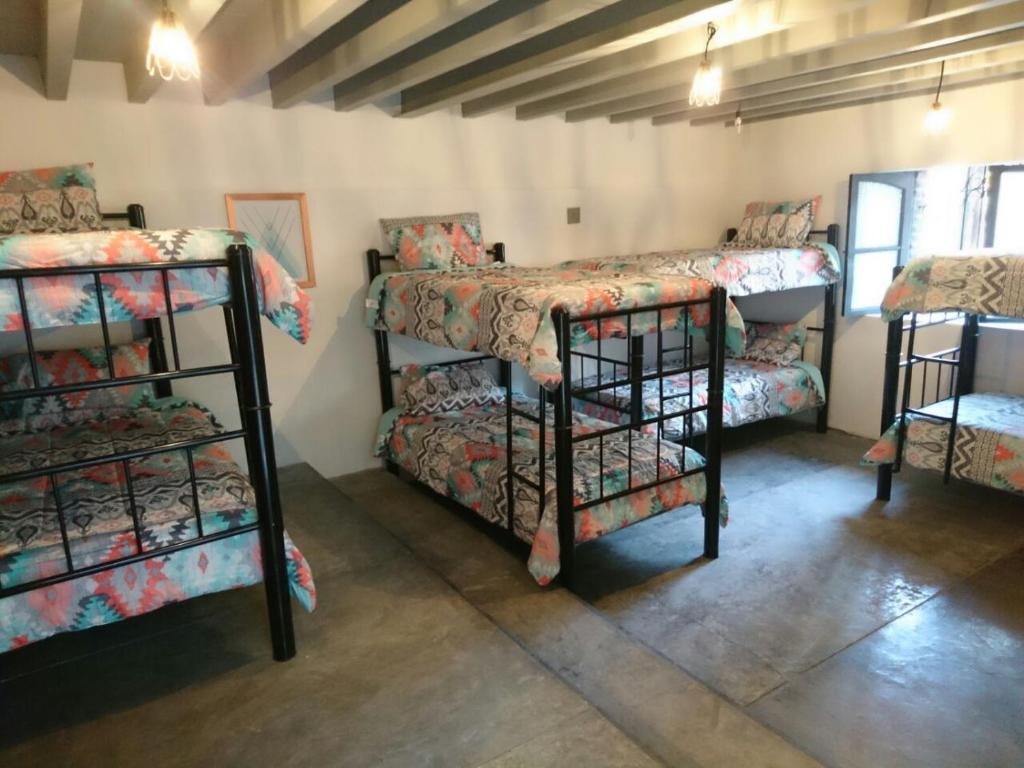
Three examples of successful metro hostel boutiques illustrate different approaches to the market. Each presents a distinct combination of unique selling points, target audience, design, location, and marketing strategy.
Example 1: The “Urban Nomad” Hostel
This hostel targets young, adventurous travelers seeking an immersive urban experience. Its unique selling proposition is its focus on community building through organized events and activities. The hostel’s design features a modern, minimalist aesthetic with shared spaces fostering interaction. Common areas include a well-equipped kitchen, a cozy common room with board games, and a rooftop terrace with city views. The hostel is centrally located in a vibrant neighborhood, close to major transportation hubs, offering easy access to local attractions. Marketing strategies emphasize online presence, social media engagement, and partnerships with local businesses. A dynamic pricing model incorporates different packages, accommodating varying budgets and travel styles. The atmosphere is energetic and friendly, promoting a sense of belonging among its guests.
Example 2: The “Global Hub” Hostel
This hostel caters to a more diverse clientele, including solo travelers, couples, and groups. Its unique selling proposition is its extensive network of local guides and curated experiences, allowing guests to explore the city beyond the typical tourist trail. The design is comfortable and well-organized, with private and shared rooms. Amenities include a spacious lounge area, a dedicated work space, and a multilingual staff. The hostel is situated in a central location, easily accessible by public transport. Marketing strategies include collaborations with travel agencies and online platforms, highlighting the hostel’s unique experiences. The hostel employs a flexible pricing model, with packages tailored to specific interests. The atmosphere is relaxed and inviting, fostering a sense of exploration and discovery.
Example 3: The “Creative Corner” Hostel
This hostel targets artists, designers, and creatives seeking inspiration in a vibrant city environment. Its unique selling proposition is its creative space, offering art supplies, workshops, and a supportive community for artists. The design features open-concept living areas, artistic touches, and a dedicated studio space. Amenities include a well-stocked library, a music room, and a rooftop garden. The hostel is strategically located in a district with galleries, studios, and creative hubs, offering easy access to the local arts scene. Marketing strategies include partnerships with art institutions and online platforms focusing on creative communities. The pricing model is competitive, offering discounts for creatives and providing flexibility in room choices. The atmosphere is vibrant and stimulating, providing an ideal environment for inspiration and creativity.
Summary Table of Metro Hostel Boutique Examples
| Example | Unique Selling Points | Target Audience | Design Features | Location |
|---|---|---|---|---|
| Urban Nomad | Community building through events and activities | Young, adventurous travelers | Modern, minimalist design with shared spaces | Central location near transportation hubs |
| Global Hub | Local guides and curated experiences | Diverse clientele (solo, couples, groups) | Comfortable, well-organized rooms and communal areas | Central location, easily accessible by public transport |
| Creative Corner | Creative space with art supplies, workshops, and community | Artists, designers, creatives | Open-concept areas, artistic touches, dedicated studio space | Location in a district with galleries and creative hubs |
Ultimate Conclusion

In conclusion, a Metro Hostel Boutique presents a compelling alternative to traditional lodging, catering to the modern traveler who values both affordability and unique experiences. Its success hinges on a strategic blend of prime location, stylish design, thoughtful amenities, and effective marketing. The examples and analyses provided offer a roadmap for creating a thriving urban haven for travelers seeking a vibrant and authentic experience.
